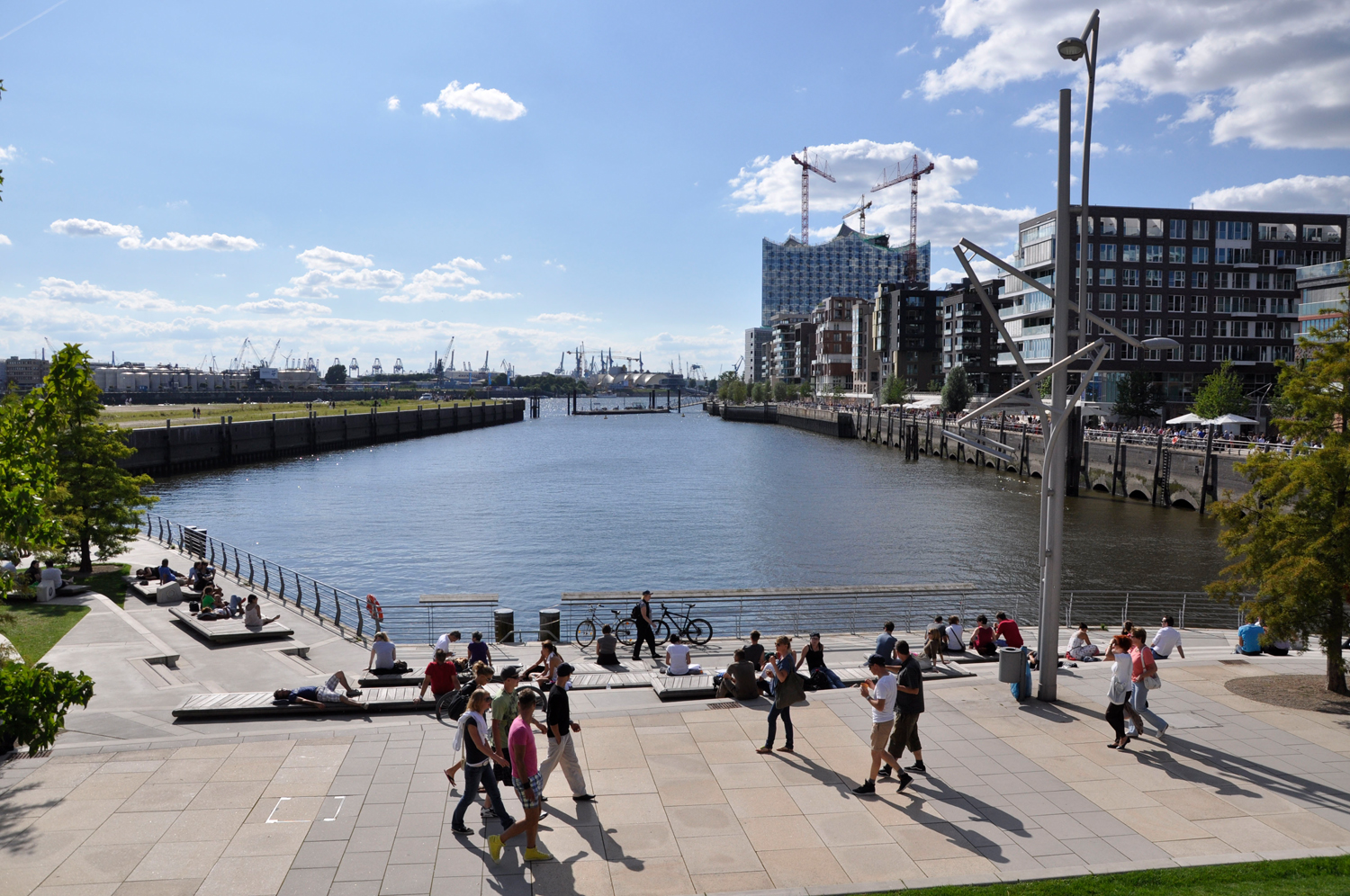29 September 2025
for Madrid Nuevo Norte

At the beginning of the 20th century, Hamburg was predominantly a port city. A significant portion of economic activity was concentrated in its docks and warehouses , with the Elbe River serving as the primary driver of growth. However, as maritime trade evolved and shipping terminals were relocated to more modern areas, the historic port gradually fell into disuse. Vast industrial lots and abandoned storage units came to occupy a position adjacent to the city centre, yet remained disconnected from the urban fabric. It was at this point that Hamburg committed to an ambitious large-scale urban regeneration project: HafenCity.
Launched in 2002 and still ongoing, the initiative has evolved into one of the most ambitious urban regeneration projects in Europe. Spanning an area of 157 hectares and with completion projected for around 2040, its primary objective is to transform the former port zone into a modern, sustainable neighbourhood fully integrated with both the city and the river.

The new urban heart of Hamburg
Due to its scale, HafenCity is practically a new urban district. Faithful to initial plans, the completed project will comprise approximately 7,500 housing units and accommodate around 45,000 jobs across office spaces, retail establishments and service sectors. The master plan advocates a mixed usage approach, integrating housing, workplaces, commerce, cultural and educational facilities, green areas and pedestrian promenades along the riverfront. This diversity has transformed HafenCity into a vibrant and appealing neighbourhood, equally suited for living, working and leisure.
One of its most emblematic landmarks is the Elbphilharmonie, Hamburg’s Philharmonic Hall, inaugurated in 2017 on the site of a former port warehouse. The work of renowned architects Herzog & de Meuron, it transcends its function as a concert venue to become a symbol of the city’s new era, where industrial heritage and contemporary design converge as a single architectural statement.
Since its opening, the “Elphi,” as it is commonly known, has established itself as an urban icon. In just eight years, its public square has welcomed over 25 million visitors, making it one of Germany’s most popular attractions. In its first five years, the Philharmonic Hall venue hosted 2,900 concerts and 3,400 educational events, drawing a combined audience of 200,000. The new district is also home to leading academic institutions, such as HafenCity University, which specialises in architecture and urban planning.
Urban planning adapted to climatic change

Building alongside the Elbe River presented an additional challenge—flood risk. Urban planners therefore chose to incorporate this environmental reality into the district’s design. Streets and pedestrian walkways were raised 7.5 metres above sea level, while lower lying areas near the water were intentionally designed to accommodate controlled flooding in the event of river surges. This urban configuration establishes a protective system against climate change impacts while preserving a direct connection to the waterfront. As a result, HafenCity has become a model of urban resilience, not merely adapting to environmental risks but integrating them as a defining part of its identity.
The development plan implements stringent decarbonisation measures and natural resource management strategies, while actively promoting sustainable mobility. Extensive pedestrian zones, dedicated cycle paths and seamless integration with public transportation reduce the reliance on private vehicles to get around the neighbourhood. Furthermore, HafenCity has implemented its own environmental certification standard for buildings and public spaces, developed in collaboration with the City of Hamburg.
A neighbourhood to live in and enjoy
Beyond its architectural design and urban planning strategies, the riverfront promenades, public squares and green spaces have made HafenCity one of the most popular destinations for both residents and visitors, whether they come from Hamburg or across Germany. Former port warehouses have been repurposed into museums, restaurants and cultural centres, while newly constructed buildings contribute modernity and efficiency. This fusion of industrial heritage and contemporary innovation gives the neighbourhood a distinctive identity within Hamburg.
HafenCity exemplifies how the regeneration of industrial zones and major infrastructure in the heart of a city offers a significant opportunity to reconnect urban environments with their surroundings, reclaim underutilised spaces and adapt them to the demands of contemporary life.